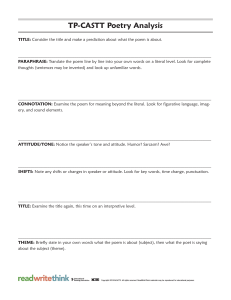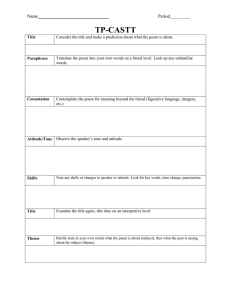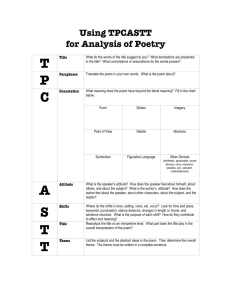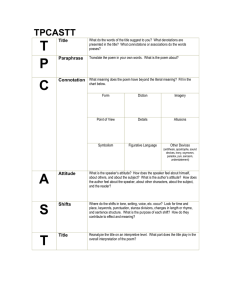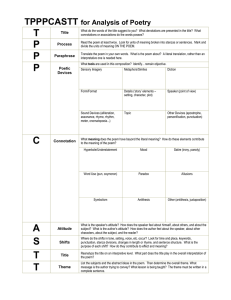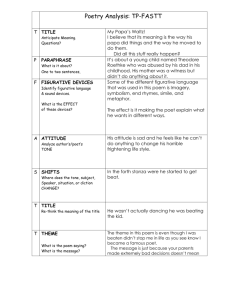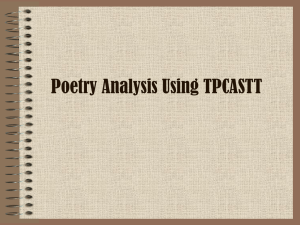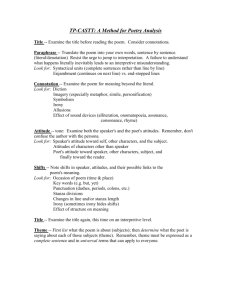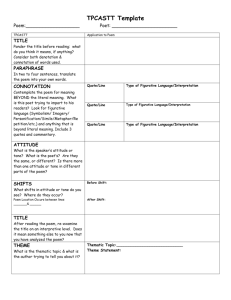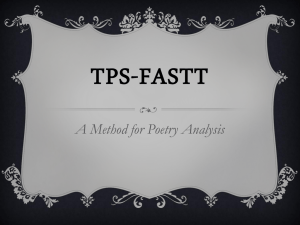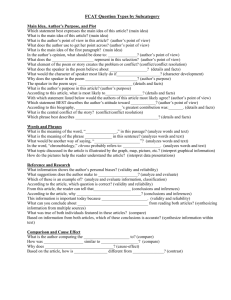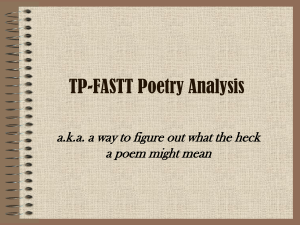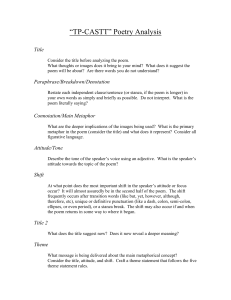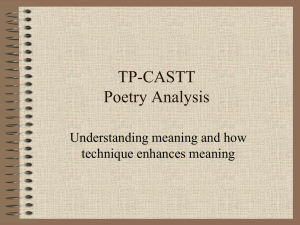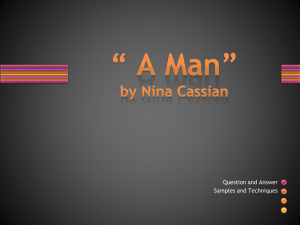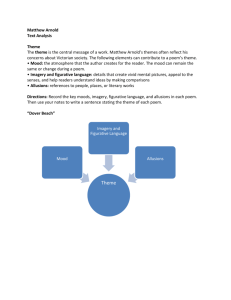TPCASTT: Method for Poetry Reading/Analysis
advertisement
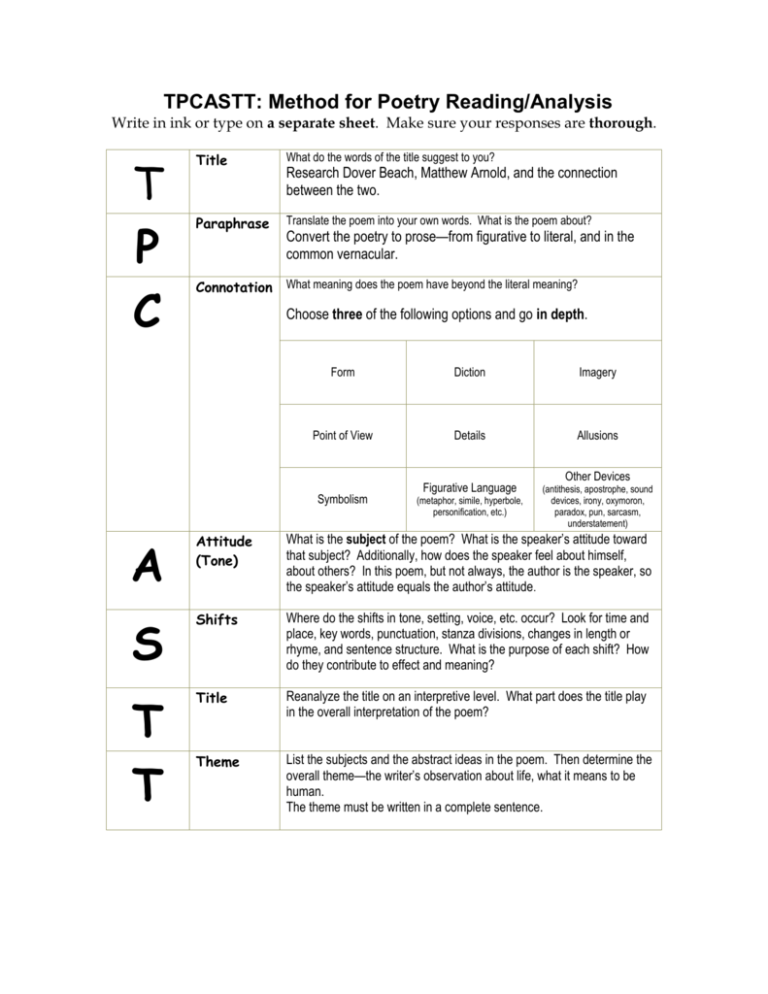
TPCASTT: Method for Poetry Reading/Analysis Write in ink or type on a separate sheet. Make sure your responses are thorough. T P C Title What do the words of the title suggest to you? Paraphrase Translate the poem into your own words. What is the poem about? Connotation What meaning does the poem have beyond the literal meaning? Research Dover Beach, Matthew Arnold, and the connection between the two. Convert the poetry to prose—from figurative to literal, and in the common vernacular. Choose three of the following options and go in depth. Form Diction Imagery Point of View Details Allusions Figurative Language (antithesis, apostrophe, sound devices, irony, oxymoron, paradox, pun, sarcasm, understatement) Symbolism (metaphor, simile, hyperbole, personification, etc.) Other Devices A Attitude (Tone) What is the subject of the poem? What is the speaker’s attitude toward that subject? Additionally, how does the speaker feel about himself, about others? In this poem, but not always, the author is the speaker, so the speaker’s attitude equals the author’s attitude. S Shifts Where do the shifts in tone, setting, voice, etc. occur? Look for time and place, key words, punctuation, stanza divisions, changes in length or rhyme, and sentence structure. What is the purpose of each shift? How do they contribute to effect and meaning? T T Title Reanalyze the title on an interpretive level. What part does the title play in the overall interpretation of the poem? Theme List the subjects and the abstract ideas in the poem. Then determine the overall theme—the writer’s observation about life, what it means to be human. The theme must be written in a complete sentence.
